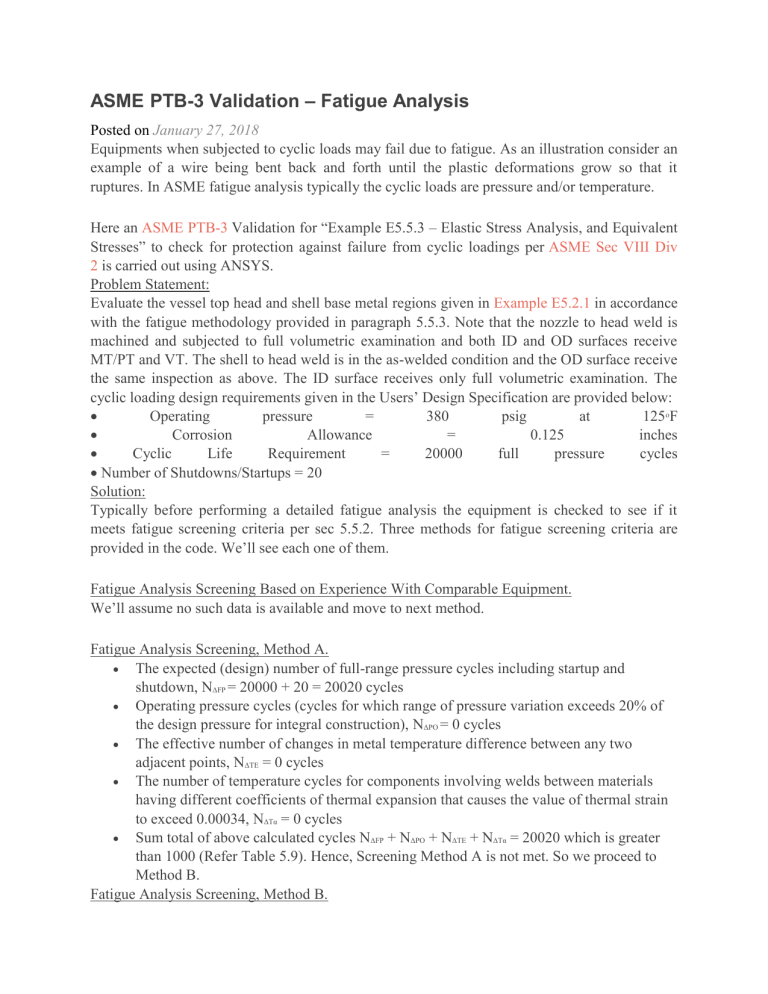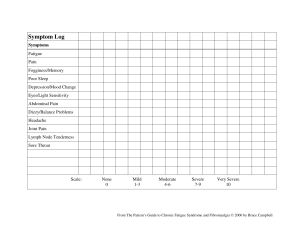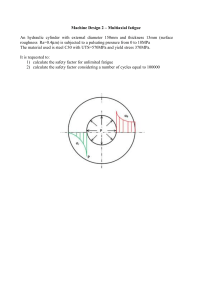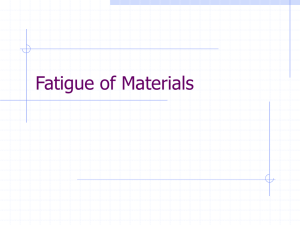
ASME PTB-3 Validation – Fatigue Analysis Posted on January 27, 2018 Equipments when subjected to cyclic loads may fail due to fatigue. As an illustration consider an example of a wire being bent back and forth until the plastic deformations grow so that it ruptures. In ASME fatigue analysis typically the cyclic loads are pressure and/or temperature. Here an ASME PTB-3 Validation for “Example E5.5.3 – Elastic Stress Analysis, and Equivalent Stresses” to check for protection against failure from cyclic loadings per ASME Sec VIII Div 2 is carried out using ANSYS. Problem Statement: Evaluate the vessel top head and shell base metal regions given in Example E5.2.1 in accordance with the fatigue methodology provided in paragraph 5.5.3. Note that the nozzle to head weld is machined and subjected to full volumetric examination and both ID and OD surfaces receive MT/PT and VT. The shell to head weld is in the as-welded condition and the OD surface receive the same inspection as above. The ID surface receives only full volumetric examination. The cyclic loading design requirements given in the Users’ Design Specification are provided below: Operating pressure = 380 psig at 125oF Corrosion Allowance = 0.125 inches Cyclic Life Requirement = 20000 full pressure cycles Number of Shutdowns/Startups = 20 Solution: Typically before performing a detailed fatigue analysis the equipment is checked to see if it meets fatigue screening criteria per sec 5.5.2. Three methods for fatigue screening criteria are provided in the code. We’ll see each one of them. Fatigue Analysis Screening Based on Experience With Comparable Equipment. We’ll assume no such data is available and move to next method. Fatigue Analysis Screening, Method A. The expected (design) number of full-range pressure cycles including startup and shutdown, NΔFP = 20000 + 20 = 20020 cycles Operating pressure cycles (cycles for which range of pressure variation exceeds 20% of the design pressure for integral construction), NΔPO = 0 cycles The effective number of changes in metal temperature difference between any two adjacent points, NΔTE = 0 cycles The number of temperature cycles for components involving welds between materials having different coefficients of thermal expansion that causes the value of thermal strain to exceed 0.00034, NΔTα = 0 cycles Sum total of above calculated cycles NΔFP + NΔPO + NΔTE + NΔTα = 20020 which is greater than 1000 (Refer Table 5.9). Hence, Screening Method A is not met. So we proceed to Method B. Fatigue Analysis Screening, Method B. For integral construction with no nozzles or attachments in the knuckle region criteria factors C1 = 3 and C2 = 2 (Table 5.10) NΔFP = 20020 cycles as in Method A. The allowable number of cycles can be obtained as N(C1S) = 10X (3-F.21) where X is obtained from Annex 3-F. A summary is shown in the above table. Since NΔFP > N(C1S) for both components, fatigue evaluation for both are required. Fatigue Evaluation – Elastic Stress Analysis, and Equivalent Stresses Finite Element Model from Example E5.2.1 is used in this analysis. The only cyclic load here is the pressure load which varies from 0 to 380 psi. Typically to find alternating stress amplitude one needs to solve two load cases: Case 1: The maximum cyclic load (in our case pressure of 380 psi) Case 2: The minimum cyclic load (in our case pressure of 0 psi) Finally stress range is obtained as Case 3 = Case 1 – Case 2. However for a linear elastic analysis like the one which we would be doing, the response (deformations, stresses) will be directly proportional to the applied loads. Hence Case 3 can be directly obtained by applying ΔP load = Pmax – Pmin = 380 – 0 = 380 psi in a single load case. Note, this approach would work even if we had a non zero Pmin. ANALYSIS SUMMARY LOADS & BOUNDARY CONDITIONS Internal Pressure of ΔP = 380 psi was applied on the inner surfaces of the model. Pressure Thrust of 888.75 psi was applied on the flange face as negative pressure. Axial displacement was arrested at the shell base. ANALYSIS RESULTS Total Deformation Plot Von-Mises Stress Von-Mises Stress from PTB-3 example SCL Locations SCL Locations from ASME PTB-3 example Membrane + Bending stress @ SCLs (The red values are from this analysis, the black values are from ASME PTB-3) Allowable Primary + Secondary stress, SPS is calculated as max(3S, 2Sy) as shown in the table below. Since Membrane + Bending Stresses are less than SPS, fatigue penalty factor Ke = 1 Computation of alternating stresses @ SCLs Salt = Kf*Ke*Total Von-Mises Stress Range/2 Here Kf, the fatigue strength reduction factor is taken from Tables 5.11 and 5.12. The below table summarizes the results (values in red are from this analysis and those in black are from ASME PTB-3. Finally allowable number of cycles, need to be calculated for Salt using Annex 3-F. Calculation for allowable number of cycles are not being done for this analysis, however reference table from ASME PTB-3 is produced below. Knowing the allowable number of cycles N and the design cycle life of the component n fatigue damage factor can be calculated as D = n/N. In case multiple cyclic loads are present, the miner’s rule D = n1/N1 + n2/N2 … can be used. This results in calculated fatigue damage for the limiting region (nozzle outside radius) of 0.073 (from ASME PTB-3). Similarly, a fatigue damage of 0.039 (from ASME PTB-3) is calculated for the head knuckle. Since D<1, the equipment is safe w.r.t fatigue damage.



